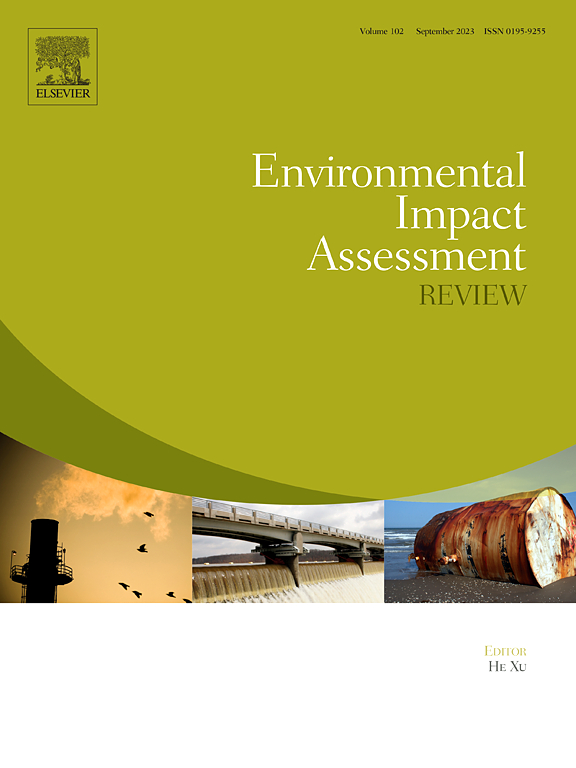泛热带亚洲喀斯特地区森林保护与恢复的社会生态影响
IF 9.8
1区 社会学
Q1 ENVIRONMENTAL STUDIES
引用次数: 0
摘要
森林保护(FC)和森林恢复(FR)有利于缓解土地退化和增加生态系统服务,特别是在生态脆弱的喀斯特地区。目前,缺乏从社会生态角度探讨FC和FR驱动机制的研究,迫切需要对喀斯特地区(KA)和非喀斯特地区(NKA)进行比较研究。基于结构方程模型,探讨了泛热带亚洲喀斯特地区森林覆盖率、森林覆盖率和区域绿化的特征,重点探讨了它们的社会生态驱动机制。结果表明:KA的区域绿化比例为43.65%,高于NKA的36.23%;在KA和NKA中,FC促进的区域绿化面积分别为164,557和351,688 km2, FR促进的区域绿化面积分别为26,023和51,698 km2。KA区区域绿化主要由林地驱动,而NKA区则由林地和耕地共同驱动。此外,研究发现,在NKA地区,农村人口变化与FC和FR呈负相关,城市化与FR呈正相关。喀斯特发展区47.40%的面积实现了经济增长和区域绿化同步发展,1.86%的面积出现了植被退化和经济下降现象。我们的研究结果强调了泛热带亚洲喀斯特地区FC和FR的社会生态影响,并确定了可持续森林管理的驱动因素。本文章由计算机程序翻译,如有差异,请以英文原文为准。
Social-ecological impacts on forest conservation and restoration in Pan-tropical Asia Karst
Forest conservation (FC) and forest restoration (FR) are beneficial for alleviating land degradation and increasing ecosystem services, especially in ecologically fragile karst areas. Currently, there was a lack of research exploring the driving mechanisms of FC and FR from a social-ecological perspective, and a comparative study between karst areas (KA) and non-karst areas (NKA) is in great need. Based on the structural equation model, this study explored the characteristics of FC, FR, and regional greening in the Pan-tropical Asia Karst with a special focus on their social-ecological driving mechanism. The results indicated that the proportion of regional greening in KA was 43.65 %, higher than that in NKA (36.23 %). The area of regional greening promoted by FC was 164,557 and 351,688 km2 in KA and NKA, while the area promoted by FR was 26,023 and 51,698 km2, respectively. Regional greening was mainly driven by forest land in KA, whereas in NKA, greening resulted from both forest land and cropland. Additionally, it was found that in NKA, a negative correlation between rural population change and FC as well as FR, while urbanization showed a positive correlation with FR. 47.40 % of the area achieved simultaneous development of economic growth and regional greening in developing karst areas, while 1.86 % of the area showed the phenomenon of vegetation degradation and economic decrease. Our findings highlighted the social-ecological impacts on FC and FR in Pan-tropical Asia Karst and identified the driving factors that could be targeted for sustainable forest management.
求助全文
通过发布文献求助,成功后即可免费获取论文全文。
去求助
来源期刊

Environmental Impact Assessment Review
ENVIRONMENTAL STUDIES-
CiteScore
12.60
自引率
10.10%
发文量
200
审稿时长
33 days
期刊介绍:
Environmental Impact Assessment Review is an interdisciplinary journal that serves a global audience of practitioners, policymakers, and academics involved in assessing the environmental impact of policies, projects, processes, and products. The journal focuses on innovative theory and practice in environmental impact assessment (EIA). Papers are expected to present innovative ideas, be topical, and coherent. The journal emphasizes concepts, methods, techniques, approaches, and systems related to EIA theory and practice.
 求助内容:
求助内容: 应助结果提醒方式:
应助结果提醒方式:


